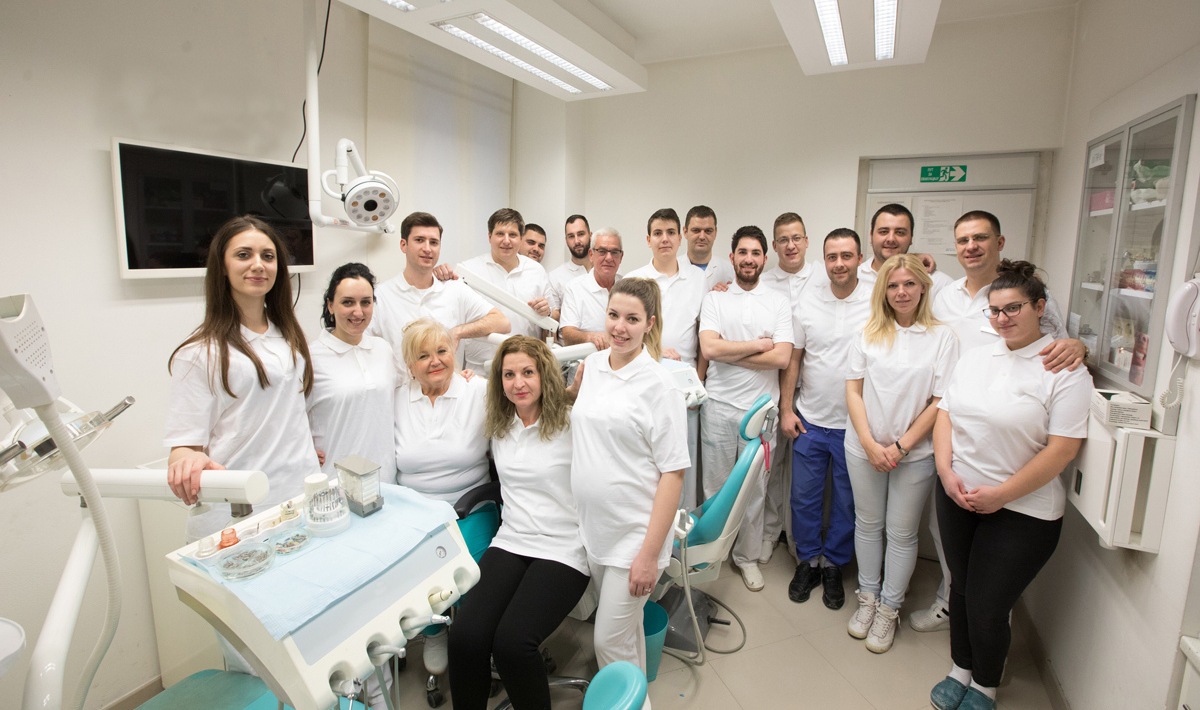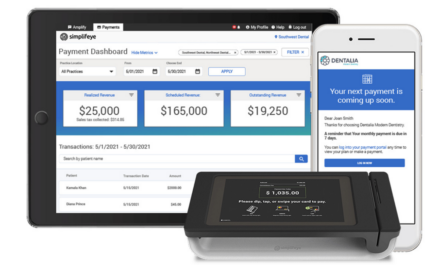Integrating new practices into your brand requires you to develop foundational systems.
By Dr. Samson Liu, MAGD, MBA, MSF
When I started SOHDental in June of 2018, I had a vision to own three locations within the first year. Somehow, after 14 months, SOHDental had 27 locations! It was not an easy or smooth journey by any stretch of the imagination, but it allowed me to develop a dental brand that benefits the patient through unique, customer-focused treatments and approaches.
SOHDental was built through affiliations. Building a business by affiliation is a risky venture for any industry if not done successfully. Part of what we initially struggled with was learning the process of buying and integrating practices. How could we establish our brand if we weren’t even able to master the art of acquiring practices? Therefore, we made a conscious decision that the only way to get good at something is to practice, practice, practice! Repeat the same process over and over again and make mistakes early and often, but then always use our best effort to learn from those mistakes. Some people called this process CANI (Constant And Never-ending Improvement).
That is essentially what we did in the first year. In addition, we quickly realized that there is little-to-no bargaining power with only two or three locations, so we developed an ambitious aggregation strategy. First-year, first step is focus on the customer. As a support organization, our customer base is dental practices, doctors, and their teams. Our priority was to aggregate as many customers as possible in the first year while refining the engine of SOHDental.
Next Steps
In the second year, second step is worked on an operational efficiency strategy. We made mistakes in our process of buying a lot of practices over a short period of time, but we accelerated our learning curve significantly. Now with the operational efficiency strategy, we are working on perfecting the transitional period of the acquisitions in order to get the new partners aligned with our mission and core values. SOHDental may not grow as quickly in the second year, but it’s equally as important to focus on the operations of supporting our practices as it is to acquire more locations.
Integrating new practices into our brand requires us to develop the foundational systems of our dental brand. At this stage, there’s no right or wrong answer! It’s all about finding what works for our team and our supported patients. What are your processes going to look like for your company? What do you want to focus on? And most importantly, how do you want your company to operate?
Moving forward, we are working one step further removed from the customer. While first year was all about acquiring practices and second year was further developing our support services, the next steps are driving growth, productivity, and revenue in the dental practices.
Improving Employee Retention
One of the biggest challenges with the acquisition approach is retaining the team after integration. We have a small transition team that is dedicated to making the integration as seamless as possible. They stay on site for the week after the closing and circle back about once a month to ensure that our new partners have everything they need.
The best way to reduce team turnover is to reduce doctor turnover. If a doctor leaves soon after we acquire a new practice, that will likely cause a domino effect for the rest of the team. Once the doctor is replaced, it is likely a few additional people will be resistant to working with the new doctor, resulting in yet another wave of people leaving.
SOHDental has implemented a doctor engagement strategy that is designed to keep doctors interested and engaged with our mission and goals. One of the ways to keep doctors engaged is by giving them opportunities to grow and give back. We have a couple of doctors that travel and work but also train and mentor other doctors in the company. In general, doctors in group-supported practices have a lot more opportunities to grow and they have more access to various trainings that would encourage their professional and personal development. Training and education is a crucial part of any engagement strategy – not only is it important to keep doctors up to date on the latest trends and innovations in the field of dentistry, but it’s also key to building that doctor culture critical to retention.
Finding the Right Partners
Acquisitions can be risky because you inherit both the good and bad from new partnerships. We learned the hard way that it is important to find a partner that is the right fit for your vision. SOHDental had a bit of an edge because I had my long-term support team with me initially; they understood the way I wanted to approach practices. I was fortunate to work with this support team in addition to leveraging my vast existing network of vendors, partners, and doctors in the industry. With these elements in place, we started off on a great foot to be successful. Yet even with our shared experience and determination to create something unique, we encountered plenty of obstacles along the way.
The best way to overcome some of these barriers is to recognize that not all practices are the same. Building a portfolio of practices means identifying and categorizing them appropriately. By grouping practices into several different tiers based on metrics such as revenue, self-sufficiency, and doctor preferences, we can better estimate the level of support they might need.
Building a business by affiliation is a risky venture for any industry if not done successfully. Part of what we initially struggled with was learning the process of buying and integrating practices. How could we establish our brand if we weren’t even able to master the art of acquiring practices? Therefore, we made a conscious decision that the only way to get good at something is to practice, practice, practice!
For example, Tier 1 practices have the highest revenue, a great doctor, and a great support team. They have perfected their processes and don’t require a lot of support. Tier 2 practices are still successful but need some support and maintenance. In Tier 2 offices, we provide training for the doctor and the team to improve their daily processes. Tier 3 practices are high-risk dental practices that often have revenue of less than $1 million. These offices usually have minimal infrastructure, a lean team where people perform multiple functions in the practice, and when there is turnover, the office no longer functions properly. However, these offices also have the highest growth potential and return with adequate support.
With these tiers in mind, my team and I can make better decisions about future partnerships with dental practices. For example, Tier 3 offices are optimal choices for purchase, but that doesn’t mean that Tier 1 offices should be ignored. The proper balance between the two is inherently dependent on your risk for appetite, availability of resources, and desired growth rate.
Dr. Samson Liu is the founder and CEO of SOHDental LLC, a clinician-owned, innovative, and people-focused dental partnership organization unique in the industry. Started in 2018, by the end of 2020, SOHDental supports over 35 practices in 8 states.
Prior to SOHDental, he was a Senior Dental Executive with 18 years of experience in leading clinical and support services at Heartland Dental from 13 to 800 locations, a ~$1.3 billion Dental Support Organization (DSO).






